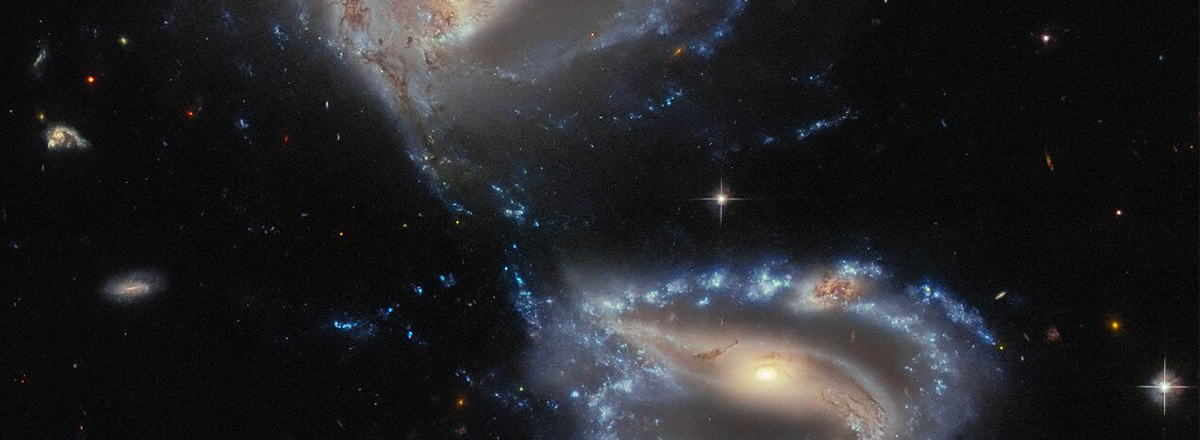Hubble Space Telescope Captures a Striking Image of Three Interacting Galaxies
These three galaxies, located approximately 500 million light-years away from Earth in the constellation Tucana, are engaged in a gravitational tango, prompting astronomers to label them as a "merging group."

The Hubble Space Telescope has unveiled a striking image of a triple-galaxy collision. This cosmic dance involves three distant galaxies, showcasing their dramatic interaction in the depths of space.
The two prominent galaxies featured in the image are NGC 7733, the smaller of the two, positioned in the lower right, and NGC 7734, the larger one in the upper left. However, the plot thickens as a third galaxy, known as NGC 7733N, comes into the picture, albeit in a somewhat concealed manner.
NGC 7733N hides amidst the swirling cosmic dust of NGC 7733, a challenge for astronomers attempting to distinguish them. Yet, meticulous analysis of their velocities, taking into account both speed and direction, has revealed that NGC 7733N is, in fact, a distinct entity rather than an integral part of NGC 7733.
These three galaxies, located approximately 500 million light-years away from Earth in the constellation Tucana, are engaged in a gravitational tango, prompting astronomers to label them as a "merging group." This nomenclature implies that they are on a cosmic collision course, destined to coalesce into a singular celestial entity.
The Hubble Space Telescope's image captures the dynamic exchange of material between NGC 7733 and NGC 7734 as they inch closer together in their gravitational embrace. As NGC 7734 exerts its gravitational influence, it siphons gas and dust from its smaller companion, an intricate cosmic phenomenon beautifully captured by the Hubble.

